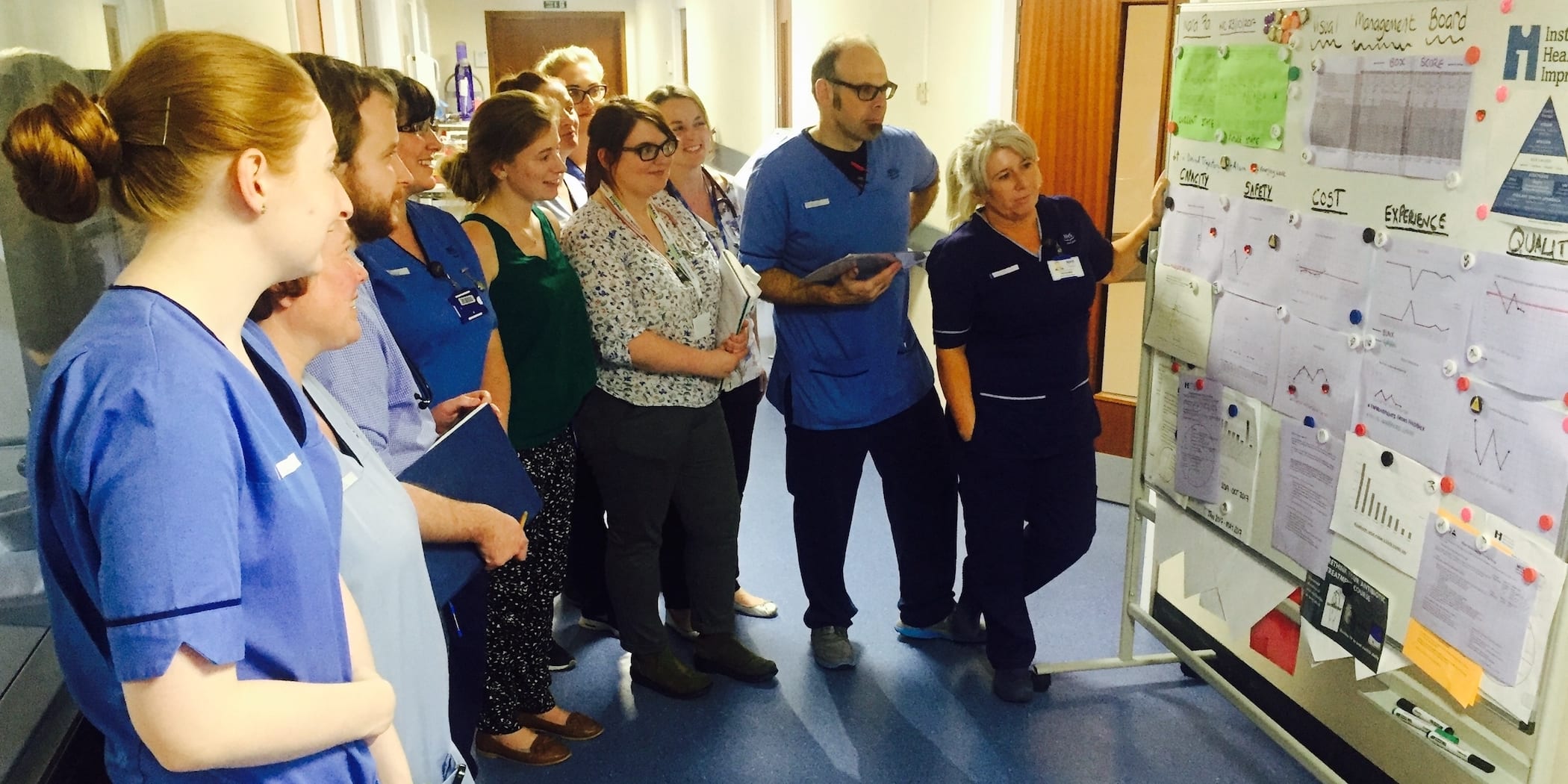
Orry Fiume on the two realities of lean that scare most CEOs
FEATURE – CEOs need to see people as assets and transform their companies’ product development systems if they are to tap into the full potential of a lean strategy.
Words: Orry Fiume, former VP of Finance and Administration and Director at The Wiremold Company and co-author of The Lean Strategy.
Even before The Wiremold Company was featured in Lean Thinking by Jim Womack and Dan Jones, word was getting out about how we were rapidly transforming our business. We soon started to get requests from other companies to visit us and see it for themselves. After Lean Thinking was published, the volume of requests grew rapidly.
At first we accommodated all of them. However, over time, the effort needed to make the visit meaningful for these companies became a significant burden and we had to change our requirements for accepting a visit. One of the new requirements was that, since lean is a business strategy, the CEO of the visiting company would have to be there. Not surprisingly, the number of requests – many of them representing nothing more than “industrial tourism” at that point – went down.
For those firms that did send their CEO, the typical visit consisted of a presentation by Art Byrne, Wiremold’s CEO, and one or more of the executive team, followed by a plant tour so they could see what they had just heard about. During the presentation, we explained our strategy and pointed out many of the most important things that our visitors had to understand. One of them was that once implemented properly, the lean strategy would yield double-digit productivity gains annually. Another thing was that these gains were created by the people doing the work (they understand what the problems are, and given the proper support are able to solve them), and in order to have their ongoing commitment to continuous improvement the company had to commit to a “no-layoff” policy (human nature being what it is, people will not willingly work themselves or friends out of a job).
Upon hearing this, some of the CEOs didn’t have a reaction. However, most of them raised an objection because they didn’t believe that they could grow their business at double-digit rates. They realized that without double-digit growth, double-digit productivity gains meant that they would have people without work to do. They saw layoffs as the only remedy to this dilemma and were scared that committing to no layoffs, without commensurate growth, would jeopardize their own job. The problem with this is that layoffs kill the employees’ desire to identify and solve problems.
So, how did Wiremold solve this dilemma?
One of Wiremold’s goals was to double in size every three to five years, half organically and half through selected acquisitions. (Note: we actually doubled in size the first four years, again in the next four years, and were on our way to doing it again when we sold the company in 2000). Since the electrical products industry in the United States traditionally grows at GDP rates (low single digits), there were only two alternatives to creating double-digit sales growth: take market share away from competitors or accelerate new product development and grow the market itself.
Taking market share away from competitors is, at best, an expensive proposition for most companies. It risks starting a price war. In our case, since we were the market leader in most of our product categories, there wasn’t much additional share to take. The only alternative for boosting our growth was accelerating our new product introductions.
Historically, it took Wiremold as much as two to three years from concept to launch of a new product, with about 30 projects in process at any given time. We’d normally release two to three new products per year. Art Byrne’s prior experiences had convinced him that by using a methodology called Quality Function Deployment (QFD) we could achieve faster product development cycles: he had seen how this provided the means to identify and manage the standard work of the product development process. In addition, as we studied the current state of our process, we realized that a lot of time was lost due to the delays in communication between the people in marketing and those in product engineering.
In order to dramatically change the way we developed new products, we:
- Adopted QFD as our new product development method;
- Physically co-located the marketing and product engineering departments in one space;
- Established new product teams consisting of a marketing person, a product engineer, a tooling engineer and a manufacturing engineer;
- Reduced the number of projects running concurrently from thirty to four.
- Established a goal of six to 12 months from concept to launch.
- Integrated target costing into the QFD model.
As a result of using QFD and the other changes we made, over the following few years our rate of introducing new products to the market went from two to three new products per year, to two to three new products per quarter, and then to two to three new products per month.
There is a lot of literature focusing on the things you do to create productivity gains – flow, pull, SMED, etc. However, there is very little that addresses what to do with those gains. The reality is that those gains create “free” capacity: the machines and people are available to satisfy increased customer demand. Most CEOs don’t understand that improving productivity alone does nothing to improve profits; they need to do something to “actualize” gains into profits. They don’t understand what needs to be done, or think that’s it’s too hard or too risky and resort to reducing their capacity to that needed for the current level of demand… which typically means laying people off. Their solution is to eliminate “unneeded” cost. They fail to see that for each additional unit they sell the material content is the only significantly added cost of that new demand (they already have the labor and machine cost). They don’t see how Wiremold didn’t increase its gross profit margin from 38% to 51% by reducing costs. It did it by growing without adding costs.
Certainly, productivity gains and sales growth do not occur at exactly the same rate. At times, we created more capacity than we needed at that moment in time. When this happens, most companies succumb to the temptation of eliminating that temporary excess (again, layoffs). And then they wonder why their “lean program” isn’t yielding the results they were promised. Wiremold invested in its people by incurring that “non-productive” costs and put it to work solving more problems.
If any CEO wants to succeed at implementing a lean strategy, he or she needs to recognize that (1) people are an asset, not a cost and (2) that a lean strategy is a growth strategy and the company’s product development system must change to capitalize on the growth in productivity. Be bold, and don’t let the challenges that a successful lean strategy presents scare you off.
Hear more from Orry, and many others, at next month's UK Lean Summit in Manchester.
More information here.
THE AUTHOR

Orest (Orry) Fiume was vice president of Finance and Administration and a Director of The Wiremold Company, West Hartford, Connecticut, which gained international recognition as a leader in lean business management in Lean Thinking. Orry led Wiremold’s conversion to lean accounting in 1991 and developed alternate management accounting systems that supported the company’s entire lean business efforts. He has studied lean production in both the U.S. and Japan and has been a guest speaker at conferences around the world. Orry is the co-author of the 2004 Shingo Prize winning book Real Numbers: Management Accounting in a Lean Organization and co-author of The Lean Strategy.
Read more


CASE STUDY – The transfer of a patient from one care setting to another is a delicate time. Insurance company SulAmérica has used its extensive lean experience to improve transitional care, and here’s how they did it.


INTERVIEW – The CEO of a Scottish health board takes us through the organization’s long lean journey, reminding us that allowing people to take the initiative often leads to the most impressive discoveries.


FEATURE – There is a form of waste – complexity in raw and packaging materials – that adds costs to manufacturing without creating value, but it is often overlooked. The author explains what it is and how to banish it.


FEATURE - Michael Ballé shares a few thoughts on leadership and respect for people, and tells us why lean management is the only way to make adaptive change a way of life.

